Viewing search results for "University of North Carolina at Asheville"
View All Posts
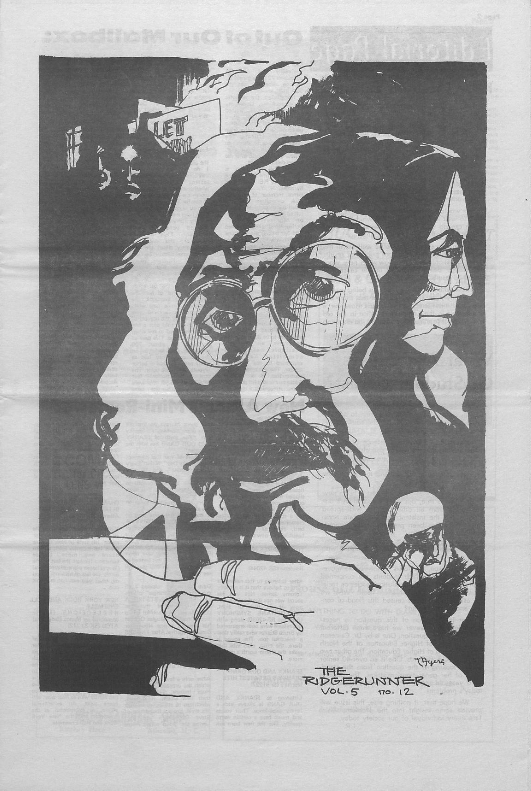
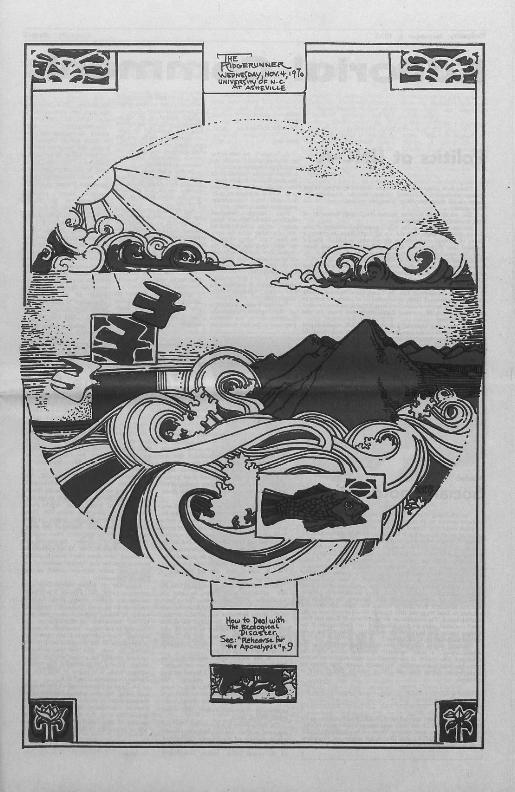
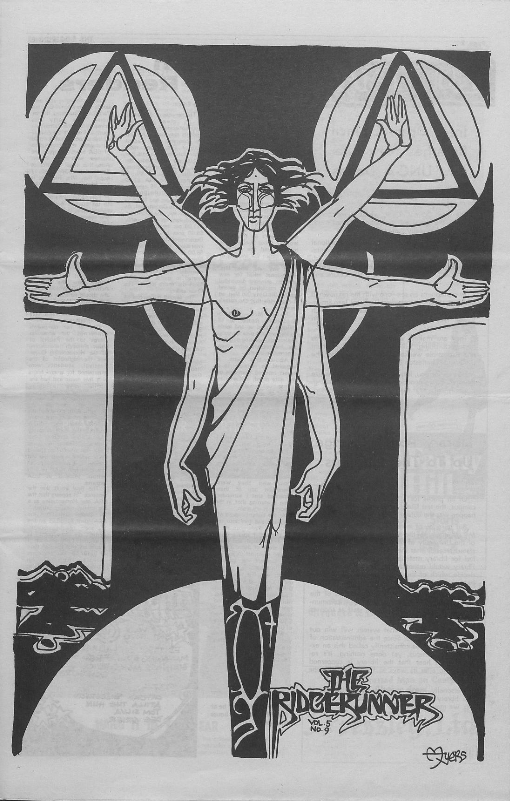
Pictured above, left to right: UNCA Student Newspapers March 01, 1970; November 04, 1970; February 09, 1970
The newest addition to the North Carolina Newspapers Collection comes to us from the University of North Carolina at Asheville. These student newspapers span several decades and portray the changing trends at one of North Carolina’s well-known artistic institutions.
Student newspapers can often be sources of historical and cultural documentation. UNCA has an active mass communication program and their student newspaper has served as an outlet for many students on campus over the years. It is easy to track the political trends both within the community and nationally through many of the articles, images, and ads that highlight current events. Researchers could find these useful for studying popular culture and political activity.
One such highlight from this batch of newspapers documents Leonard Nimoy’s visit to campus during the 1970’s. Nimoy was a well known actor from the Star Trek franchise, where he played Mr. Spock.
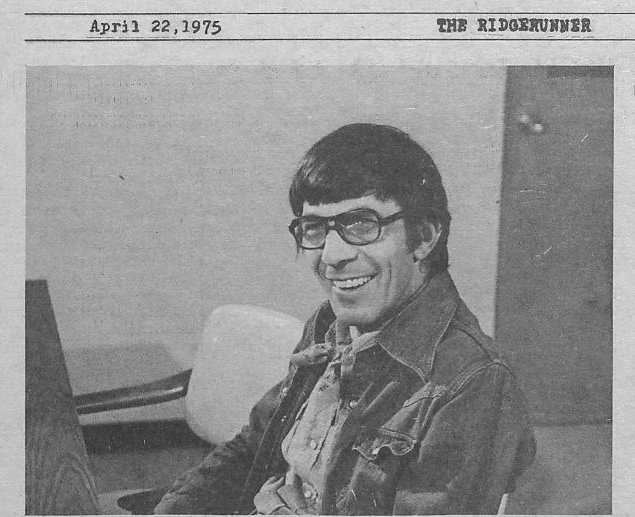
The Ridgerunner, April 22, 1975, page 7
To learn more about the University of North Carolina at Asheville, please visit the homepage. To see all their items available on DigitalNC, please visit the contributor page. To see the student newspapers available online from your community or school, check out the North Carolina Newspapers Collection.
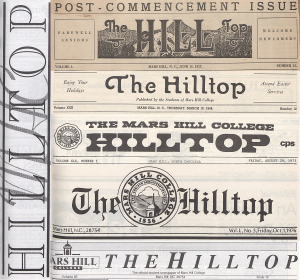
A variety of Hilltop mastheads used over the years. Top to bottom: June 18, 1927; March 18, 1948; August 29, 1975; October 1, 1976; May 1, 1992. Left: February 2, 1995.
Seventy years of The Hilltop, Mars Hill University’s student newspaper, have been added to DigitalNC. The 924 issues were provided by our partner, Mars Hill University, and cover academic years from 1926-1995.
Mars Hill University is located in Mars Hill, a town in Madison County approximately 20 minutes north of Asheville in the mountains of western North Carolina. According to the university’s website, it is “the oldest institution of higher learning in western North Carolina on its original site.”
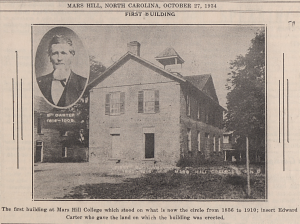
Image of the first building at Mars Hill College taken from the October 27, 1934 issue of The Hilltop.
The university is a private four-year liberal arts institution founded in 1856 by Baptist families to provide an education for their children based on the Baptist faith. While no longer directly associated with any religious organization, the university identifies as “an academic community rooted in the Christian faith.”
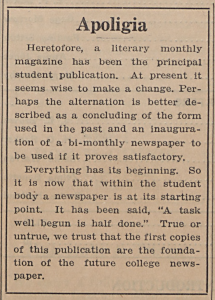
An article introducing the new Mars Hill College newspaper from the first issue dated September 25, 1926.
First founded as the French Broad Baptist Institute, the name was not long after changed to Mars Hill College. In 2013, it became Mars Hill University to reflect the institution’s growth in enrollment and the variety of educational offerings. Students began publishing The Hilltop when the institution was still Mars Hill College. It is the official student newspaper created to cover campus news for the students, faculty, and staff.
Articles cover a wide variety of topics. The first issue from 1926 reports on campus beautification efforts, student enrollment, activities of campus organizations, the upcoming football season, and more. Faculty and staff news is also covered, with reports on new hires, retirements, and milestone events. To read these and thousands of other articles, visit and browse the Mars Hill University Student Newspaper page.
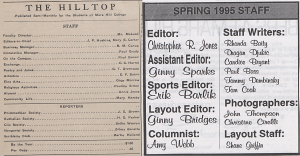
List of staff members for The Hilltop from the September 25, 1926 issue (left) and March 30, 1995 issue (right) who worked to bring news to the campus community.
The Mars Hill University yearbook, The Laurel, is also available on DigitalNC with editions from 1917-2016. For more information about these and other materials from Mars Hill University, check out their partner page or their official website.
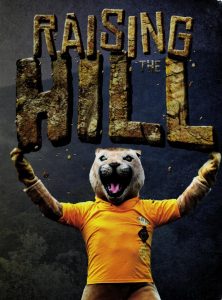
The cover of the 2016 edition of The Laurel
5 editions of The Laurel, the yearbook from Mars Hill University, are now available on DigitalNC. These editions span 2012-2016 and join previously digitized copies of The Laurel dating back to 1917.
Mars Hill University was founded in 1856, and is located in Mars Hill, a town in western North Carolina, 15 miles from Asheville. The University is home to around 1,200 students and offers 7 undergraduate and graduate degrees. The most recent yearbooks document student life and activities, and include photographs of sports, clubs, performances, and events.
Since almost 100 years of The Laurel have been digitized, it’s fun to see the differences from the most recent 2016 edition and the 1917 edition. While the 2016 edition features glossy full-color photographs and shows a much wider range of academic and campus life activities, certain features, such as student portraits and photographs of sports teams, are present in both.
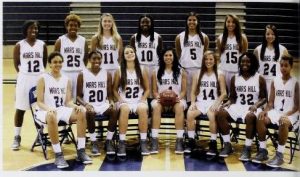
The 2016 Mars Hill girls basketball team
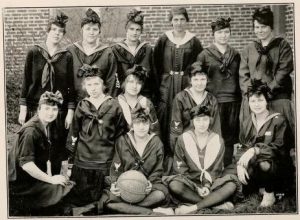
The 1917 Mars Hill girls basketball team
To see the new yearbooks, visit the links below:
To browse both new and old editions of The Laurel, click here. To learn more about Mars Hill University, take a look at their partner page or website.
Mascots are a complicated phenomenon. They inspire a spectrum of reactions: ridicule, ambivalence, or fierce loyalty. With thousands of yearbooks online, all of us here at the Digital Heritage Center have probably spent more time looking at yearbooks than anyone else you’re likely to meet. Mascots are a common theme.
I’ve been working on today’s post for quite some time; unable to find a history or comprehensive list of mascots in North Carolina I decided to compile one myself. So here’s a stab at a college mascot overview, drawn from yearbooks and other campus publications. Let me know what I’ve missed or gotten wrong!
Children
In the early 20th century, schools frequently chose children as mascots or sponsors, whether for a sports team or for a particular class. The earliest example we’ve found on DigitalNC is from a 1910 publication by Atlantic Christian College (now Barton College) in Wilson, which shows Elizabeth Settle Caldwell as the Senior Class sponsor.
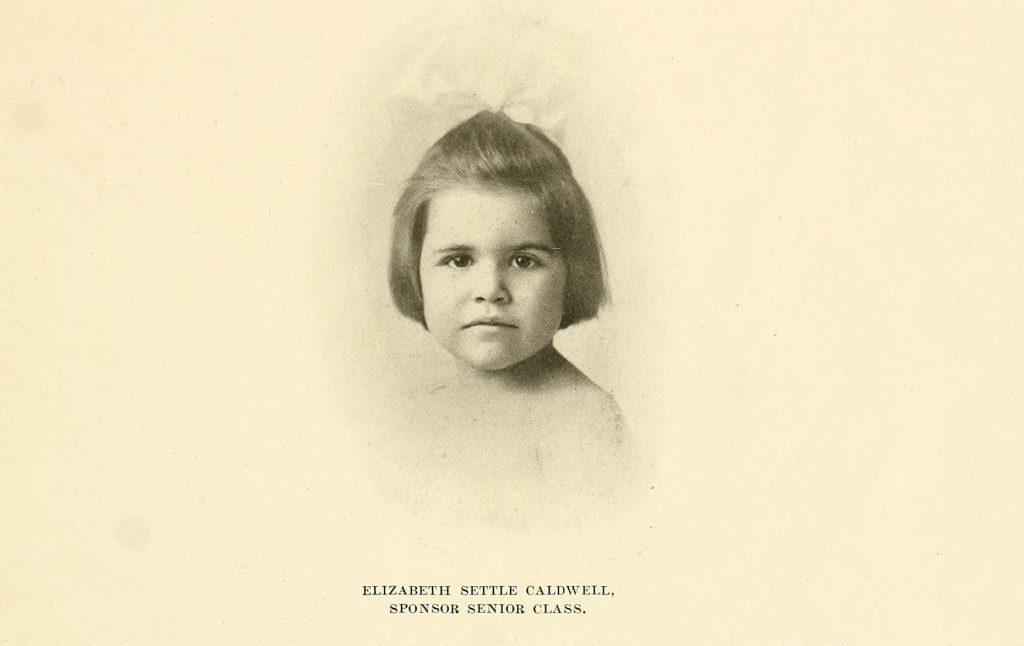
Elizabeth Settle Caldwell, First North Carolina Mascot? From the 1910 Pine Knot yearbook, Atlantic Christian College.
Ms. Caldwell was the daughter of Jesse Cobb Caldwell, the college president. From what we’ve been able to tell, children mascots were frequently younger siblings of students, teachers, or others associated with the school. Students mention that Ms. Caldwell brought “solace to many a lonely, homesick heart” and this may be why children were chosen – to foster a feeling of family and comfort among students. We’ve seen several references to mascots being elected or being chosen through competition, although what this might be we haven’t been able to discover. The trend of choosing children as mascots seems to continue through the 1960s. The latest one we found is Dawn, the Senior Class mascot at Peace College (now William Peace University) in 1966.
Animals
Animal mascots span schools across the state, whether it’s Rameses at UNC-Chapel Hill or WCU’s Catamount. The bulldog and different types of cats win out as most frequently adopted. Pictures of live animal mascots start to appear in yearbooks in the early 1900s, and continue today although much less frequently. For a variety of reasons, including concerns expressed by animal rights activists, schools have shifted away from actual animals to students dressing up like animals, as you’ll see later on in this post.
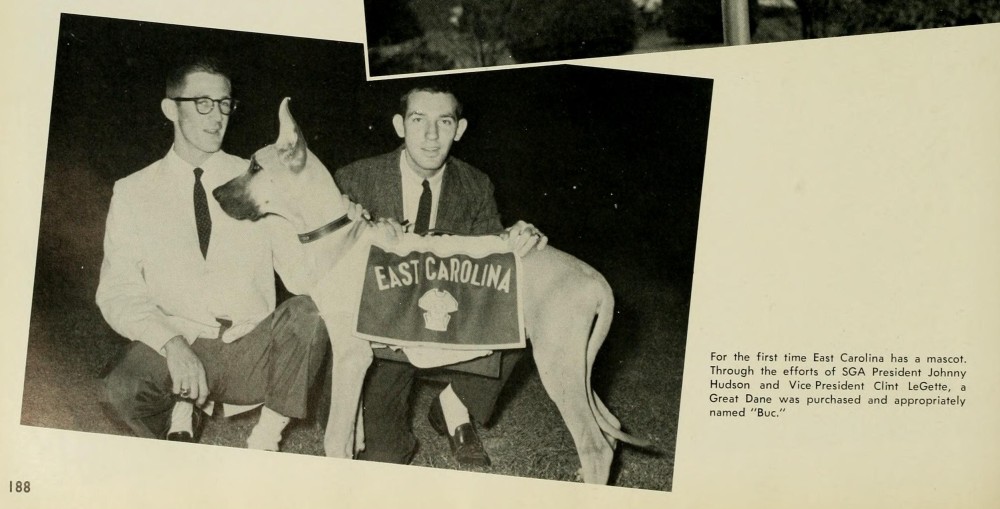
“Buc” is described here as East Carolina University’s first mascot. From the 1959 Buccaneer yearbook.
Characters
While about half of the four-year college mascots in North Carolina are animals, most of the others are characters that are historic, mythical, or extraordinary in nature. From what I’ve seen in NC yearbooks, humans dressing up as the school mascot really got traction in the 1960s. Initially, these costumes weren’t the fuzzy creations we think of today, but rather less complicated ensembles where the mascot’s identity (his or her face and body) was often apparent. Yosef the Mountaineer, beloved icon of Appalachian State University, was created sometime around 1942 and looked like this in the 1960s:
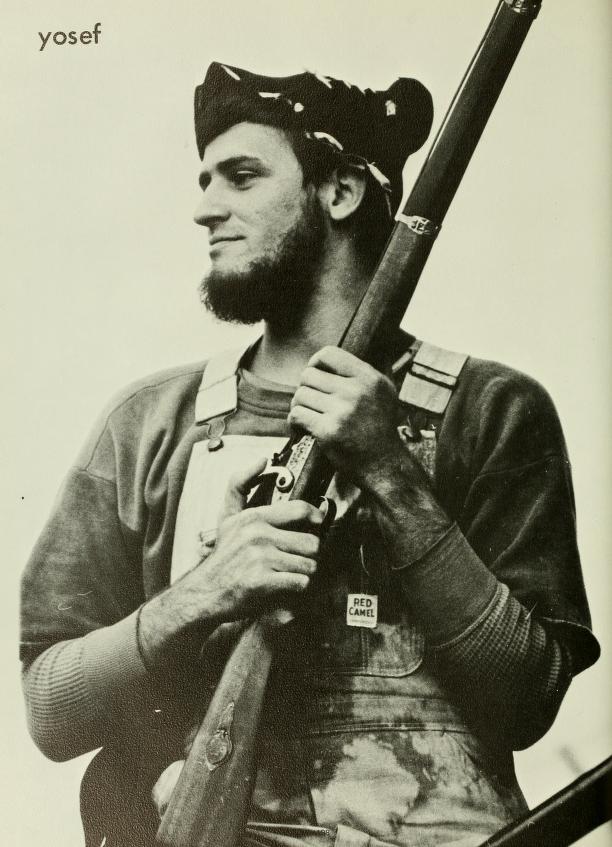
Yosef the Mountaineer, aka James Randle Tedder (we think). From the 1969 Rhododendron yearbook, Appalachian State University.
One of my favorites has to be this picture of Duke Blue Devil, from 1950:
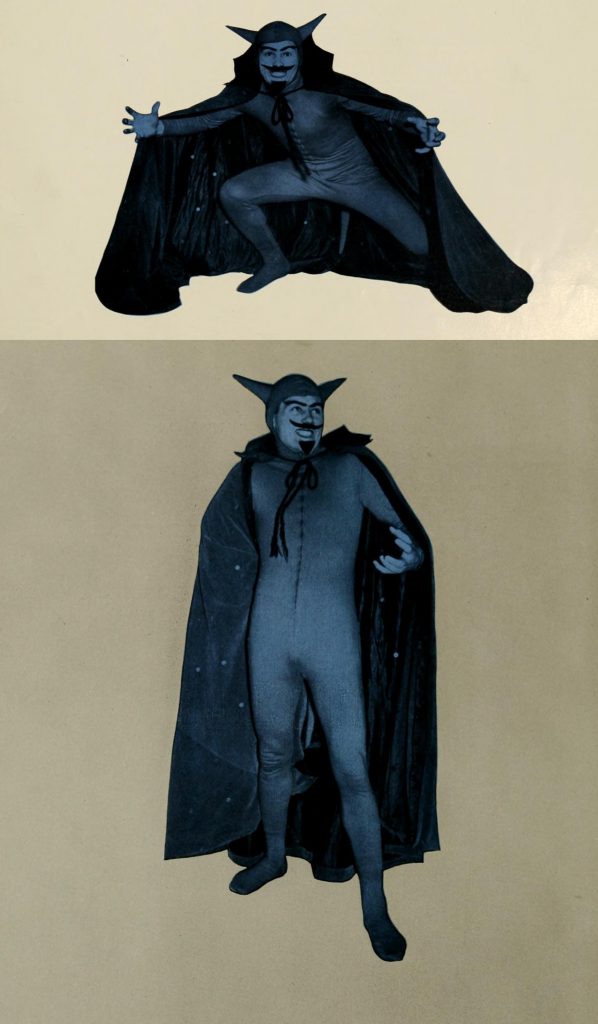
The Blue Devil. From the 1950 Chanticleer yearbook, Duke University.
Perhaps it was too hard to maintain a degree of consistency as students graduated over the years, and mascot anonymity seemed like a better idea. Whatever the reason, you start to see fuzzy, oversized costumes with gigantic headpieces in the late 1970s.
The Big Costumes
Whether animal or character, plush mascots that include a single piece body suit with a large plastic or cloth-covered head is something most Americans can identify with, thanks to professional sports. Colleges in North Carolina really embraced these costumes through the 1980s. Here’s what the UNC-Wilmington Seahawk looked like in 1987:

The Seahawk. From the 1987 Fledgling yearbook, UNC-Wilmington.
Some schools have developed multiple mascots dedicated to different audiences. It seems like the difficulty with these types of costumes is how to pull off a fierce facial expression that doesn’t come off as goofy or too scary for children. I think this picture from Davidson College sums it all up:
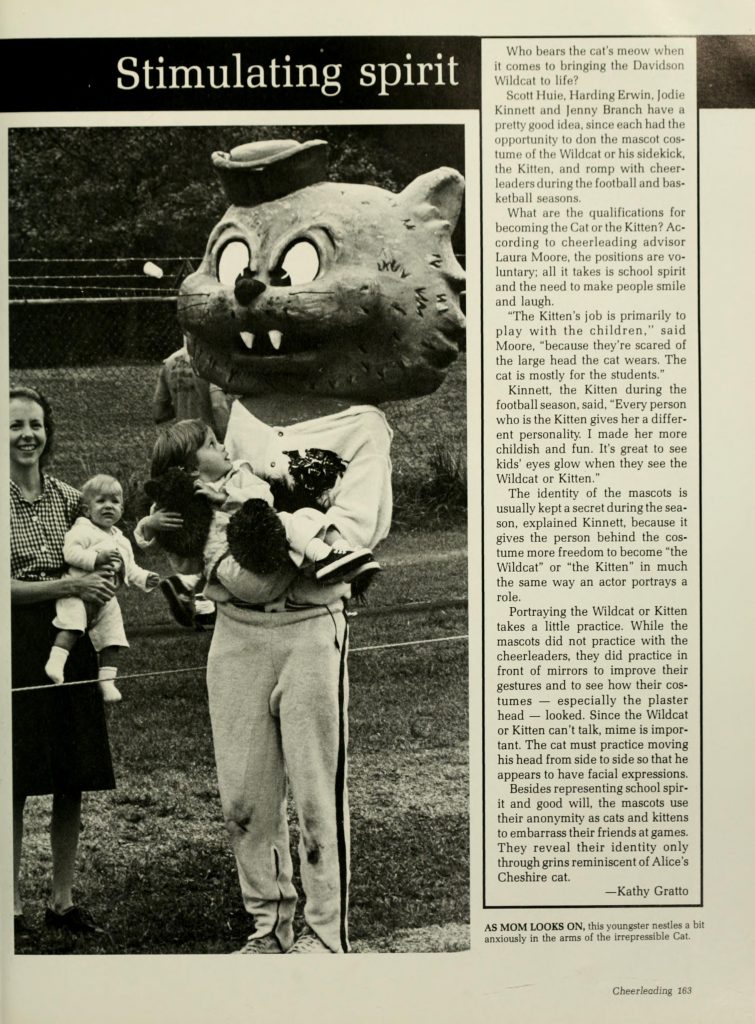
The Davidson Wildcat and … friends. From the 1983 Quips and Cranks yearbook.
I will also take this opportunity to mention a mascot that routinely makes the “wait … what?” list – the Campbell University Fighting Camels:
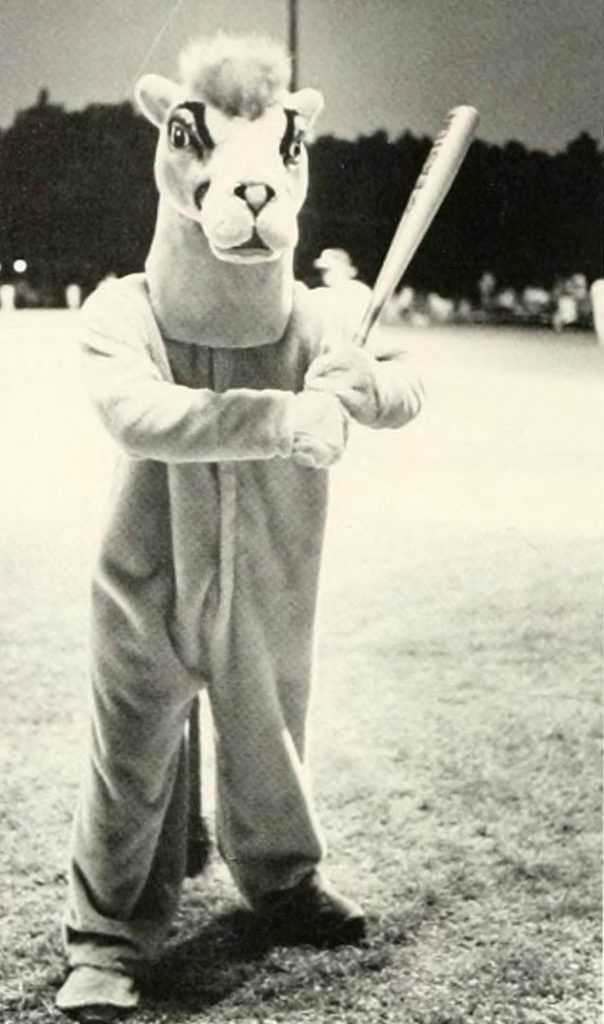
The Campbell Camel. From the 1983 Pine Burr yearbook.
Even the humans and human-like creatures are clothed in oversized costumes these days. Wake Forest University’s Deacon is a dapper chap:
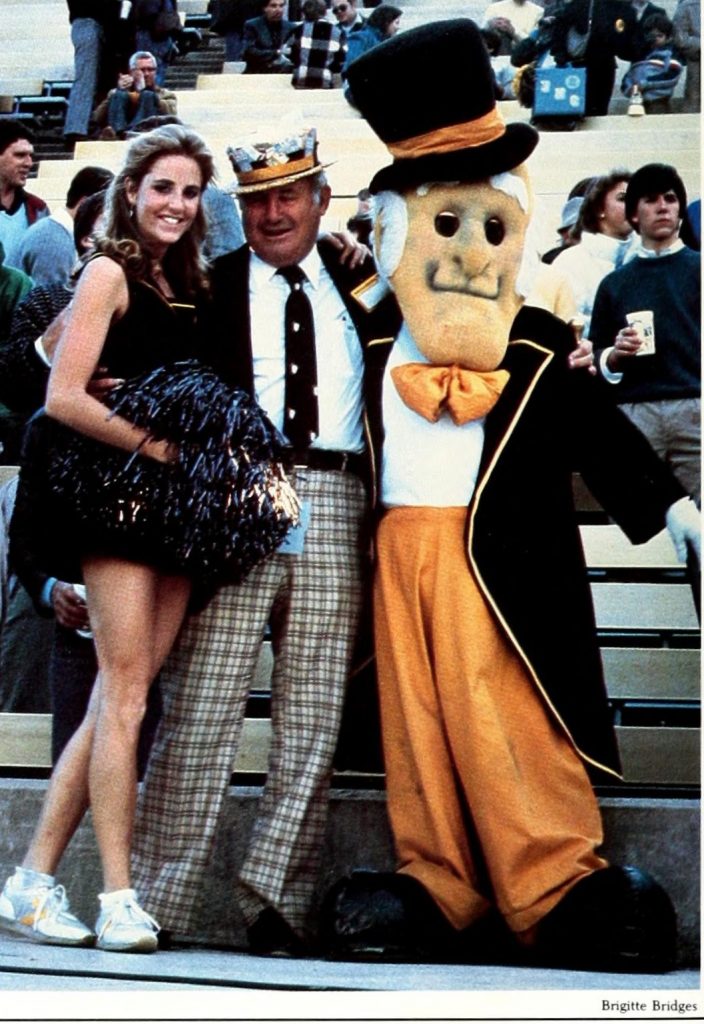
Wake Forest’s Deacon poses with fans. From the 1985 Howler yearbook.
In addition to the Demon Deacons and the Blue Devils, North Carolina boasts a number of other spiritual mascots: North Carolina Wesleyan’s Battling Bishops, Belmont Abbey’s Crusaders, and Guilford College’s Quakers. Meredith College’s teams are known as the Avenging Angels (formerly just the Angels). While Elon University’s mascot is now the Phoenix, before 2000 they were the Fighting Christians:
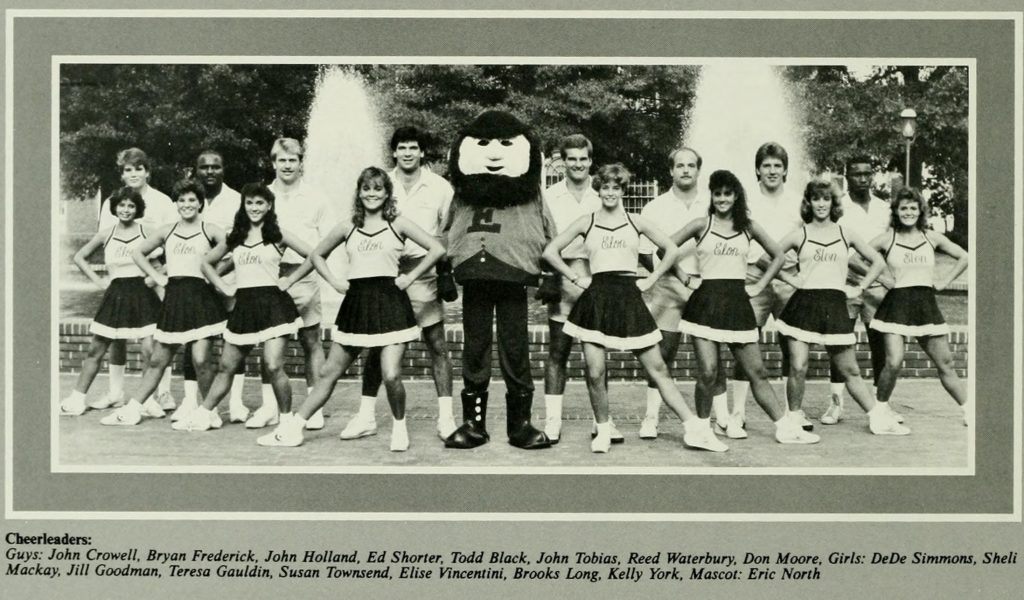
The Elon Fighting Christian mascot with cheerleaders. From the 1986 Phi Psi Cli yearbook.
Two schools break with the animal/human tradition in North Carolina. The Brevard College Tornadoes and the Louisburg College Hurricanes. Weather phenomena mascots are always difficult to pull off. I couldn’t find one for Brevard, but Louisburg, which currently has a bird mascot, had “Louie” up until 2006:
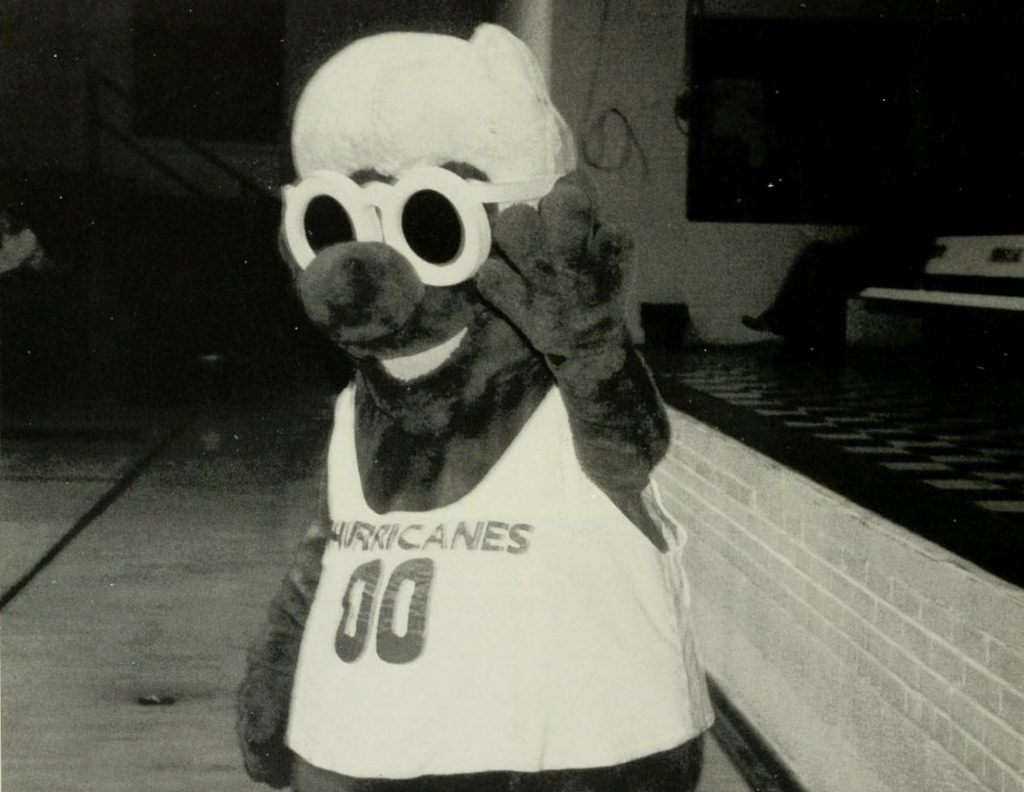
Louie, the former Louisburg College Hurricanes mascot. From the 1996 The Oak yearbook.
Who knows when the next mascot sea change will happen. Below is a list of mascots in North Carolina; let us know if we got anything wrong. Which one is your favorite?
| School |
Mascot |
Notes |
| Appalachian State University |
Yosef the Mountaineer |
First appeared in the yearbook in 1942 |
| Barton College |
Bulldog |
|
| Belmont Abbey College |
Crusader |
|
| Bennett College |
|
Known as the Bennett Belles |
| Brevard College |
Tornado |
|
| Campbell University |
Fighting Camels |
The Hornets in the 1920s-1930s |
| Catawba College |
Catawba Indian |
|
| Chowan University |
Hawks |
The Braves until 2006 |
| Davidson College |
Wildcats |
Also a bulldog (1929) and a bobcat (1939) |
| Duke University |
Blue Devil |
|
| East Carolina University |
Pirates |
Formerly Pee Dee the Pirate |
| Elizabeth City State University |
Vikings |
|
| Elon University |
Phoenix |
The Fightin’ Christians until 2000 |
| Fayetteville State University |
Broncos |
|
| Gardner-Webb University |
Runnin’ Bulldogs |
|
| Greensboro College |
The Pride |
Formerly the Hornets |
| Guilford College |
Quakers |
|
| High Point University |
Panthers |
|
| Johnson C. Smith University |
Golden Bulls |
|
| Lees-McRae College |
Wily the Bobcat |
|
| Lenoir-Rhyne University |
Joe and Josie Bear |
|
| Louisburg College |
Hurricanes |
|
| Mars Hill College |
Mountain Lion |
|
| Meredith College |
Avenging Angels |
Formerly the Angels |
| Methodist University |
Eagles |
|
| Montreat College |
Cavaliers |
|
| Mount Olive College |
Trojans |
|
| North Carolina A&T |
Aggie Dog (Bulldog) |
|
| North Carolina Central University |
Eagles |
|
| North Carolina State University |
Wolfpack |
|
| North Carolina Wesleyan College |
Battling Bishops |
Formerly the Circuit Riders |
| Peace College |
Pacer |
|
| Pfeiffer University |
Falcons |
|
| Queens University of Charlotte |
Rex the Royal |
|
| Saint Augustine’s University |
Mighty Falcons |
|
| Salem College |
Spirits |
|
| Shaw University |
Bears |
|
| St. Andrews University |
Knights |
|
| UNC Asheville |
Bulldog |
|
| UNC Chapel Hill |
Rameses the Ram |
Also known as the Tar Heels |
| UNC Charlotte |
Norm the Niner |
|
| UNC Greensboro |
Spartans |
|
| UNC Pembroke |
Braves |
|
| UNC Wilmington |
Seahawk |
|
| UNC School of the Arts |
Fighting Pickle |
|
| UNC School of Science and Math |
Unicorn |
|
| Wake Forest University |
Demon Deacons |
|
| Warren Wilson College |
Owls |
|
| Western Carolina University |
Catamount |
“Paws” |
| Wingate University |
Bulldog |
|
| Winston-Salem State University |
Ram |
|
The quote in this post’s title comes from a student who participated in a 1989 protest at UNC-Chapel Hill, pictured below.
One of the most historic student protests in the United States happened on this day in 1960 right here in North Carolina. NC A&T students protested segregation by sitting down at a segregated Woolworth’s lunch counter in Greensboro. The first images in this post were taken at that event and come from the 1960 Ayantee yearbook. Other images come from schools in all parts of the state, and date from 1960 through 2012.
North Carolina college students have passionately protested a variety of issues and events over the years. Looking back through yearbooks and student newspapers, you’ll find editorials with strong opinions and photographs of students standing up and speaking out in this most public of ways. Today we’re sharing the tradition of protest by students over the years, as reported in their own media.
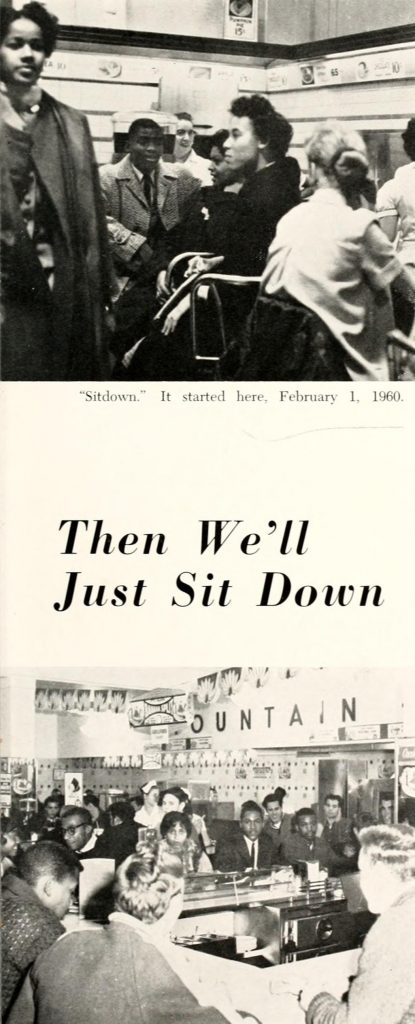
North Carolina Agricultural and Technical College, 1960, Segregation (Woolworth’s Lunch Counter, Greensboro)
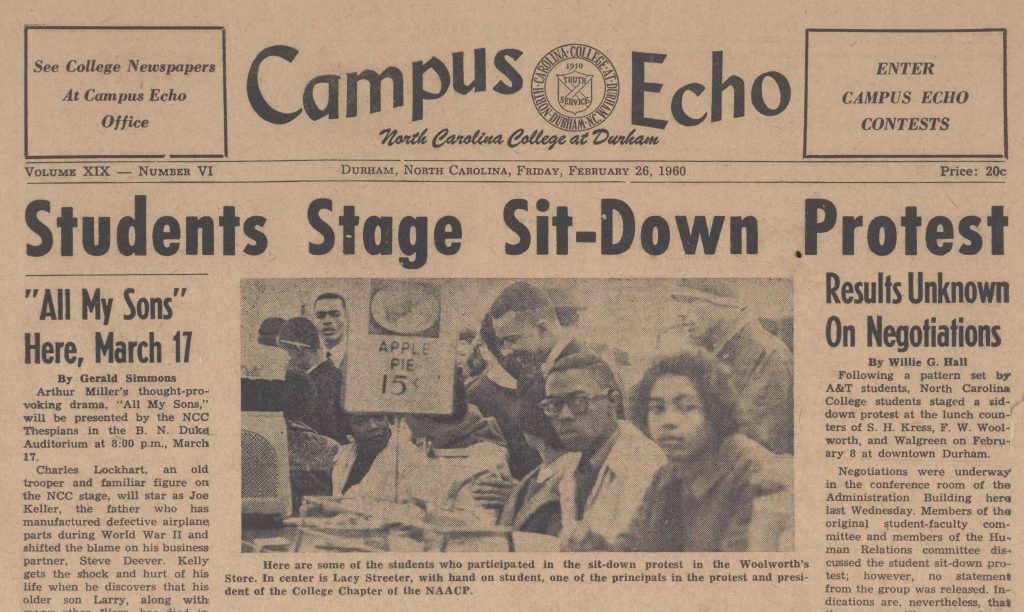
North Carolina Central University, 1960, Segregation (Woolworth’s Lunch Counter, Durham)
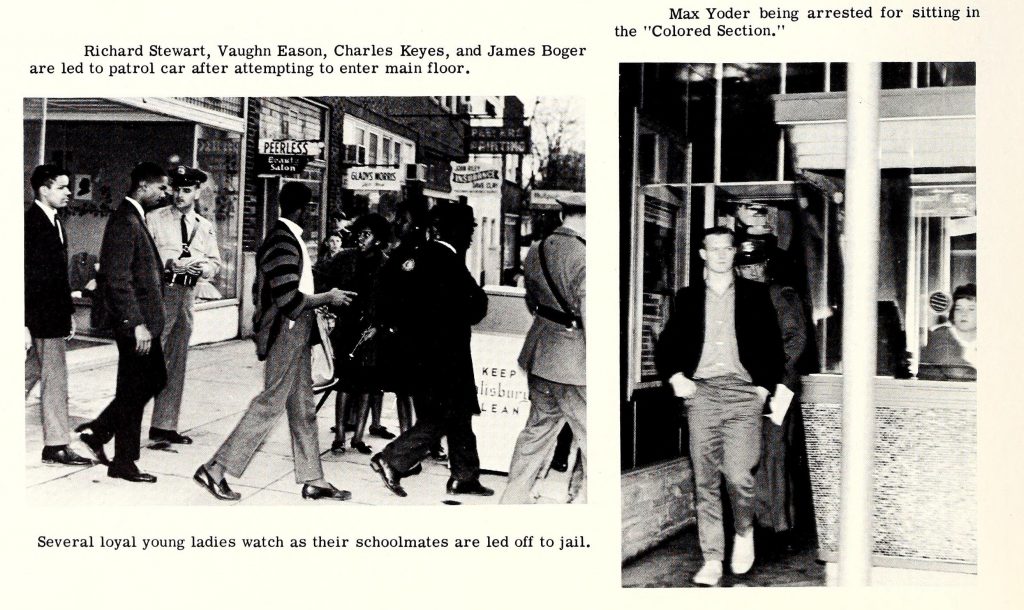
Livingstone College, 1961-1962, Segregation (Capitol Theater, Salisbury)
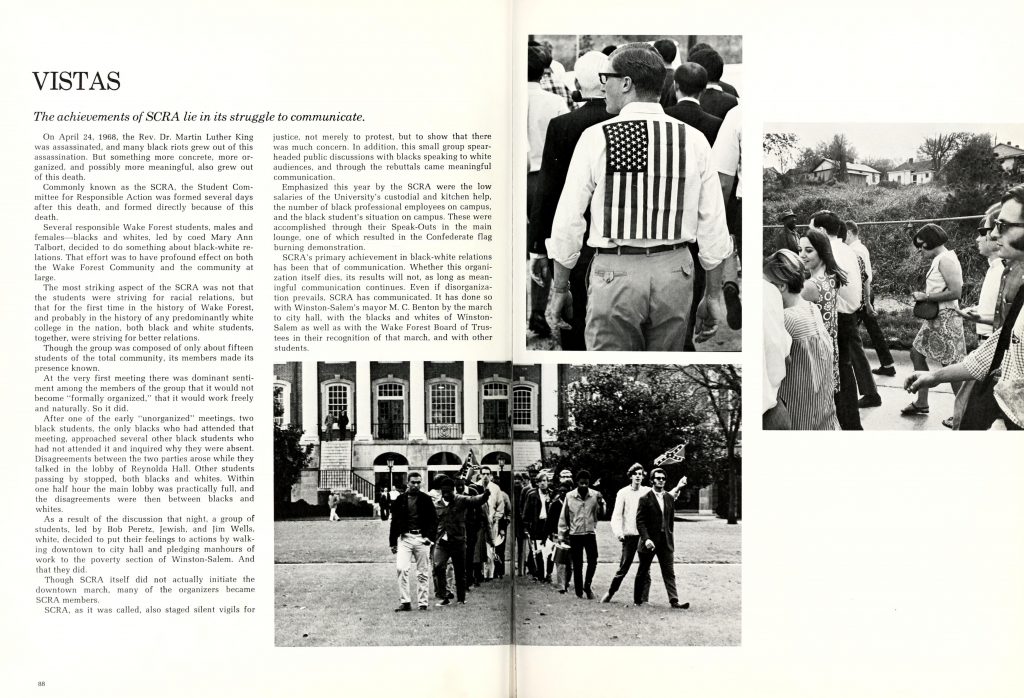
Wake Forest University, 1969, Assassination of Dr. Martin Luther King, Jr.
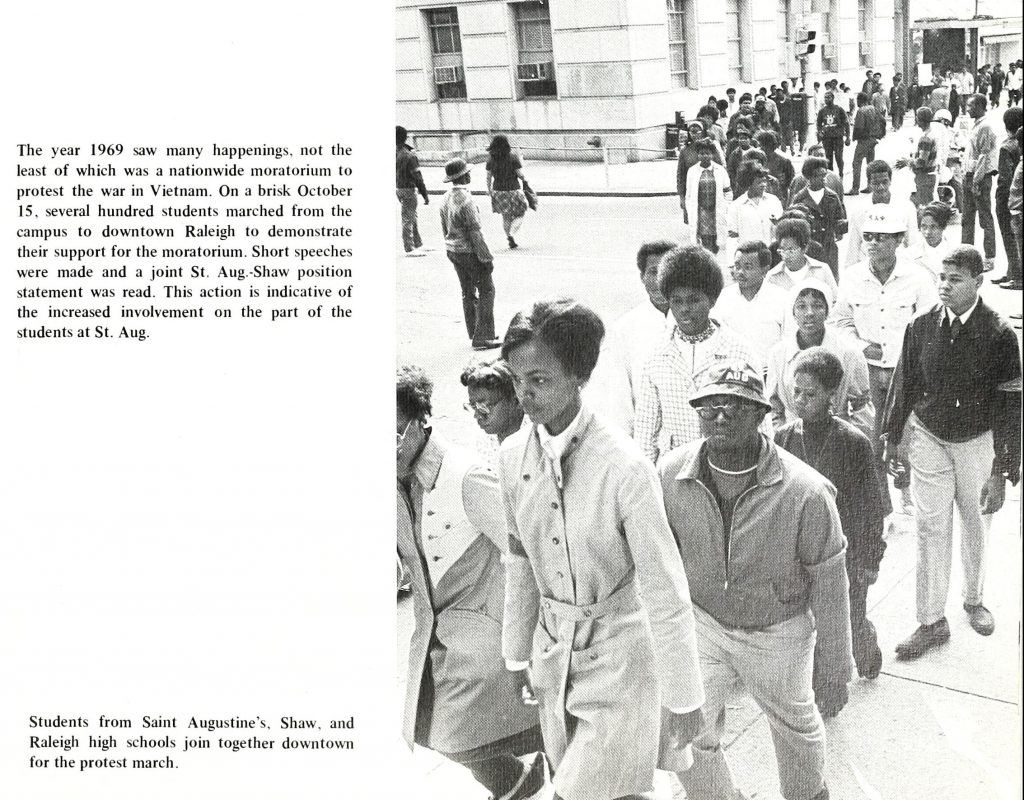
Saint Augustine’s, 1970, Vietnam War
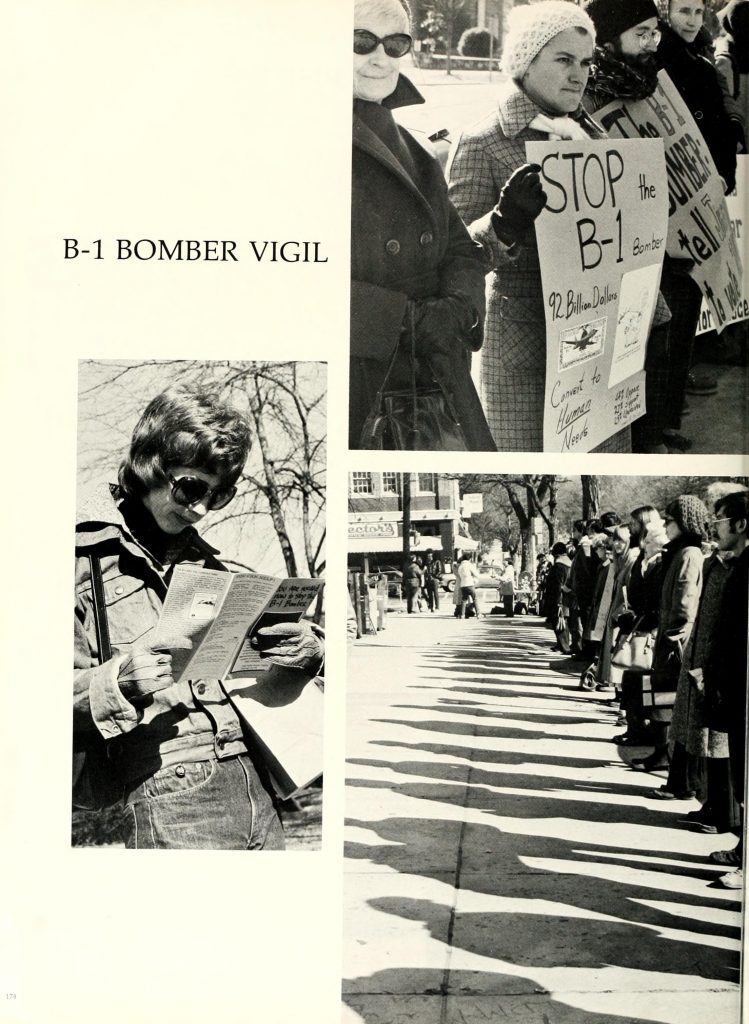
UNC-Chapel Hill, 1977, B-1 Bomber and Nuclear Armament
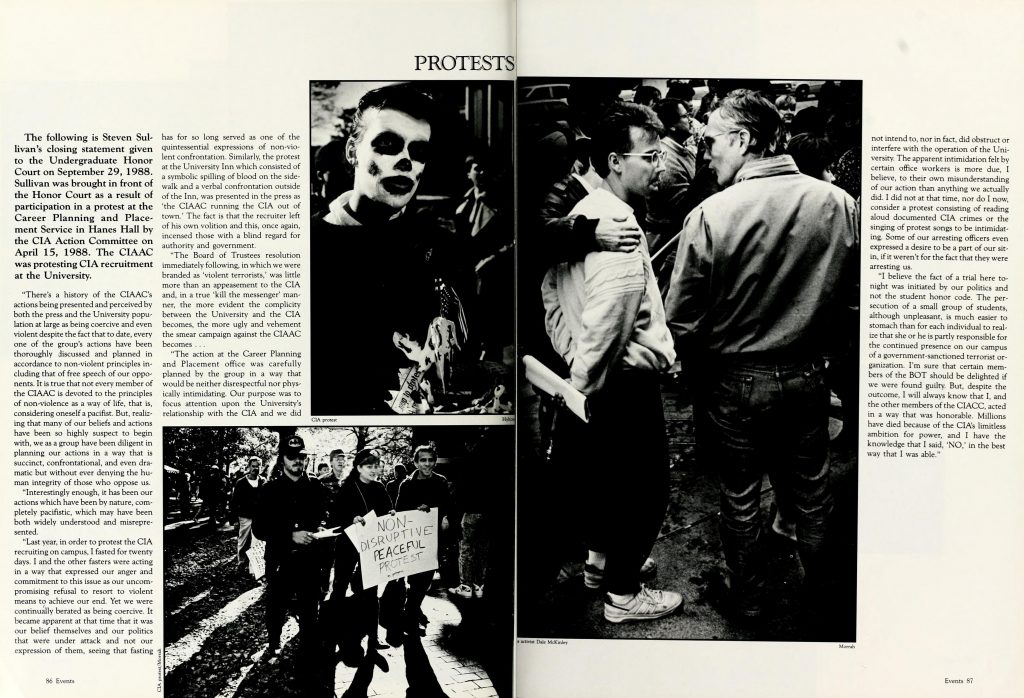
UNC-Chapel Hill, 1989, Central Intelligence Agency (CIA)
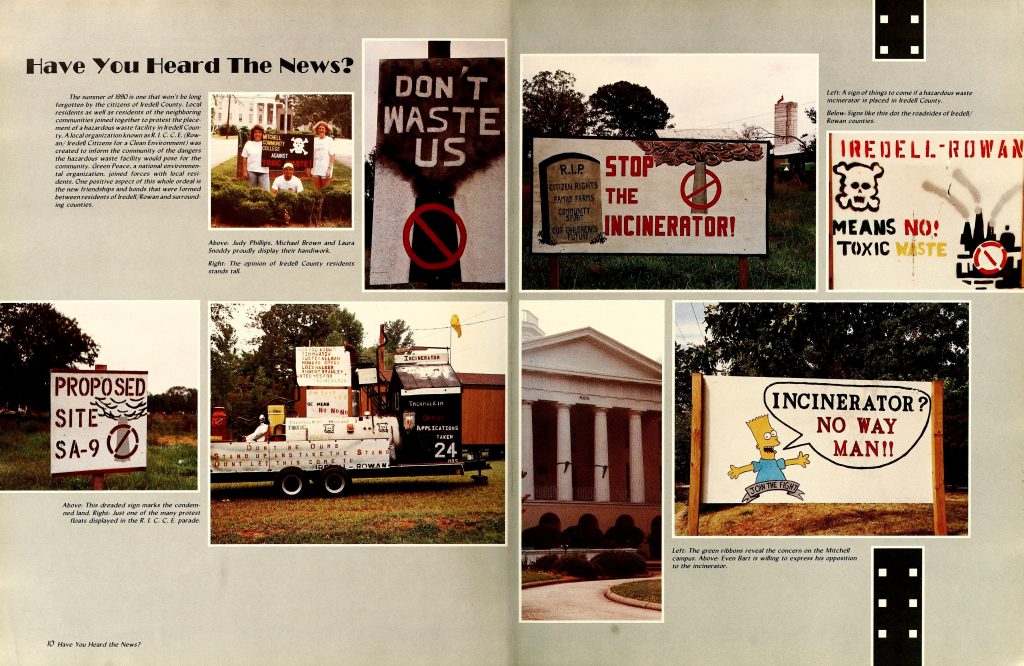
Mitchell Community College, 1990-1991, Hazardous Waste and Environmental Pollution
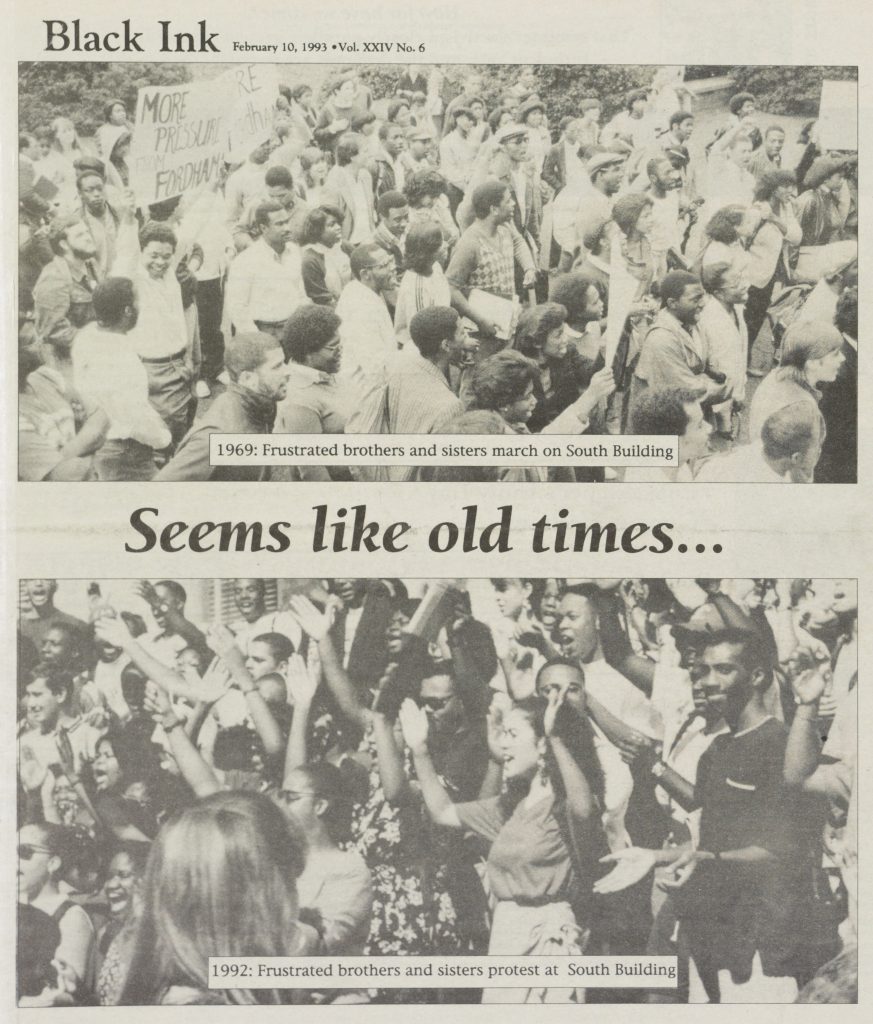
UNC-Chapel Hill, 1993, Racism
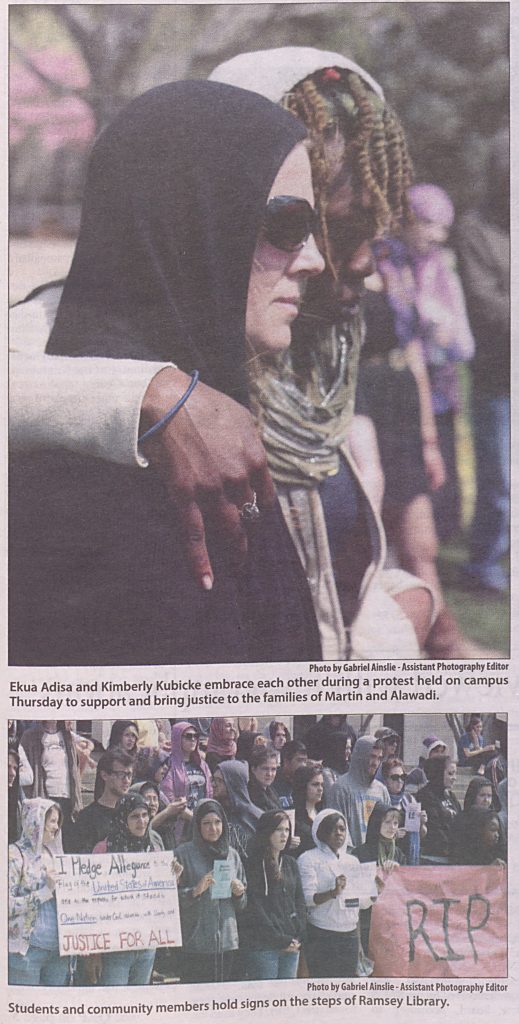
UNC-Asheville, 2012, Hate Crimes
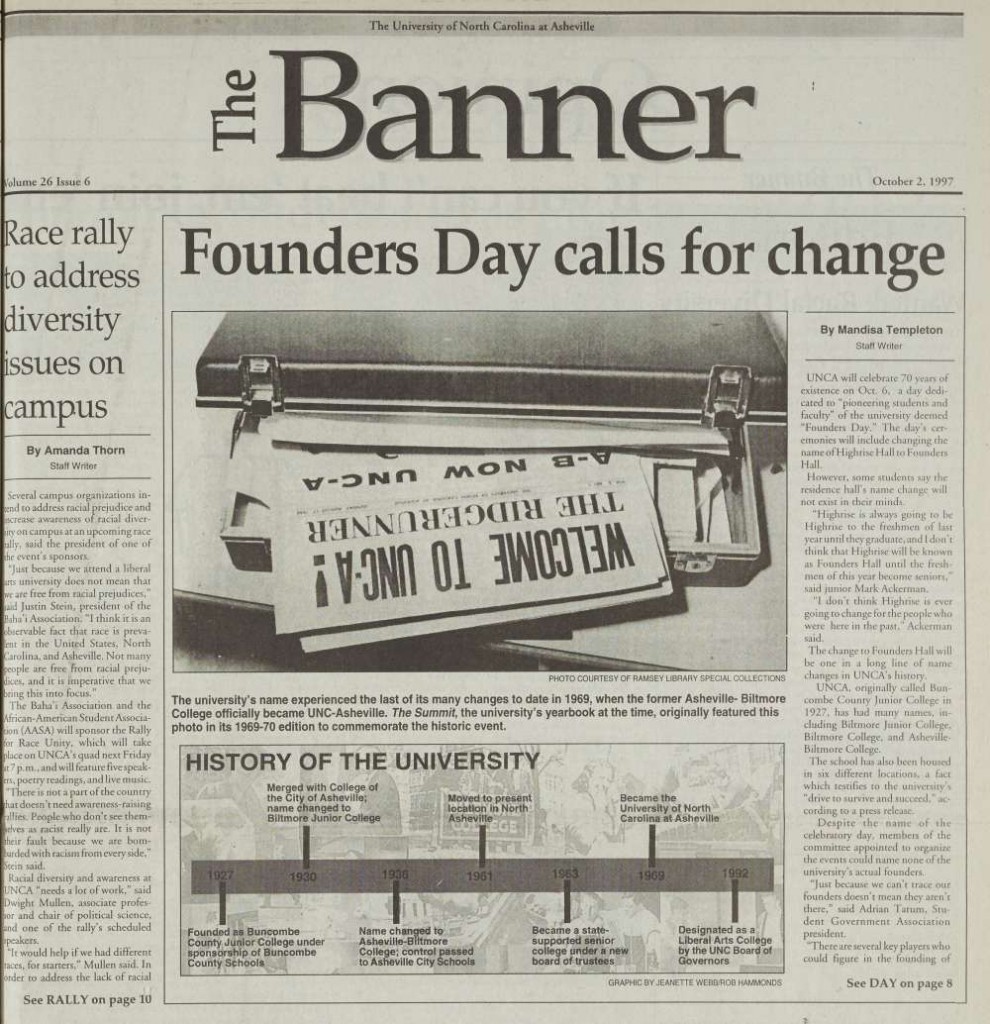
This issue announces the first Founders Day, held in honor of UNC Asheville’s 70th anniversary, October 1997.
Bulldog fans can now search UNC-Asheville’s student newspapers through the 1990s and up to 2003, thanks to the school’s Ramsey Library. Joining papers dating back to 1935, these recently added issues are all entitled The Blue Banner or The Banner. They document the popular rise of the Internet, and include the events of September 11, 2001.
The October 2, 1997 issue pictured to the right documents the school’s first Founders Day, which is still celebrated each September.
You can view student newspapers as well as yearbooks from the University of North Carolina at Asheville on DigitalNC.
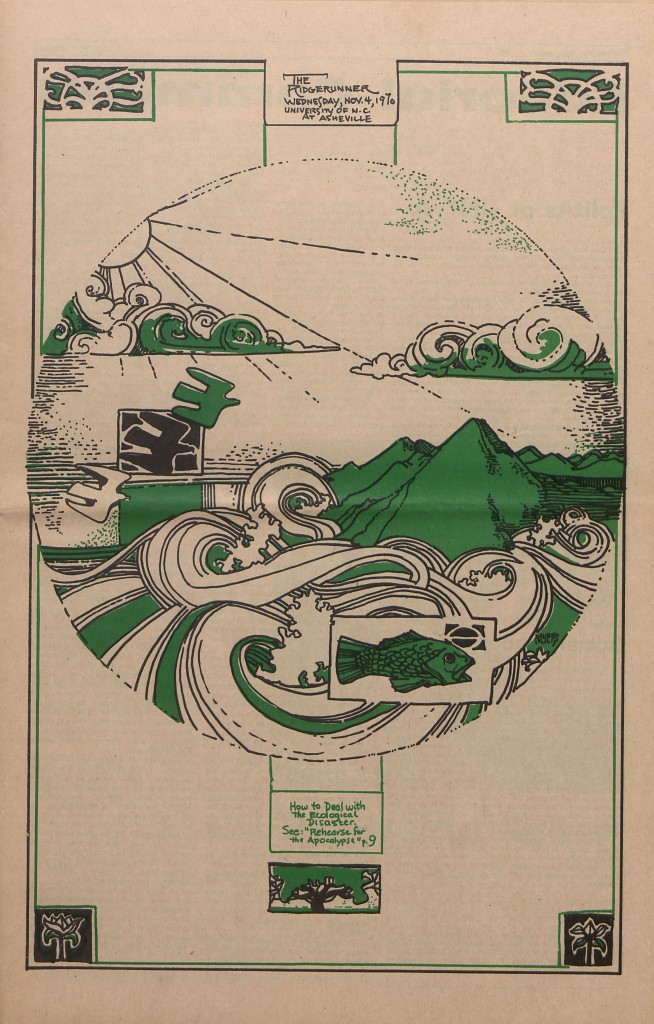 We’ve recently worked with our longtime partner, the University of North Carolina at Asheville, to present issues of their student newspapers on DigitalNC. There have been a number of different titles over the years:
We’ve recently worked with our longtime partner, the University of North Carolina at Asheville, to present issues of their student newspapers on DigitalNC. There have been a number of different titles over the years:
Issues span back to when the school was Asheville-Biltmore College, through its name change and inclusion in the UNC system (1969).
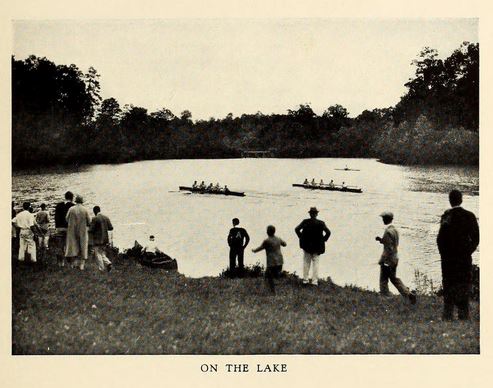
Lake on Asheville School’s campus, from the 1928 Asheville School yearbook
To view more yearbooks from across North Carolina, visit our North Carolina Yearbooks collection.
Big news for alumni of public universities in North Carolina: student yearbooks from all 15 University of North Carolina system universities are now freely available online. Yearbooks for 14 of the schools have been digitized by the North Carolina Digital Heritage Center and are available in the North Carolina Yearbooks collection on DigitalNC, while yearbooks from North Carolina State University are available through the excellent Historical State digital collection.
These yearbooks are terrific resources for students and alumni, as well as anyone interested in the evolution of higher education and student life in 20th-century North Carolina. There are a total of 774 volumes available from these schools, ranging in date from 1890 (
The Hellenian, at UNC-Chapel Hill) to the present.
Pick your alma mater or hometown school from the links below and start browsing:
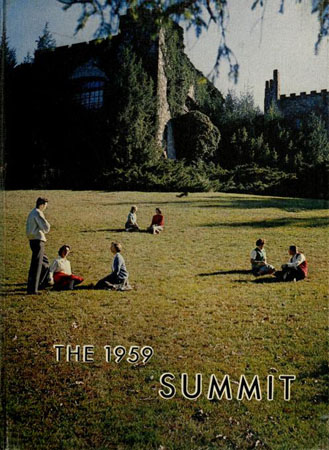
Thirty-nine volumes of “The Summit,” the student yearbook from Asheville-Buncombe College and the University of North Carolina at Asheville are now available online. These volumes cover the years 1939-1985 and include the period when the school was known as the “College in the Sky” due to its impressive home in Seely’s Castle on Sunset Mountain. The school moved to the castle in 1949, eventually outgrowing it and moving to its current campus, at the site of the Civil War Battle of Asheville, in 1961.
The yearbooks are part of the D.H. Ramsey Library Special Collections & University Archives at UNC-Asheville.




































